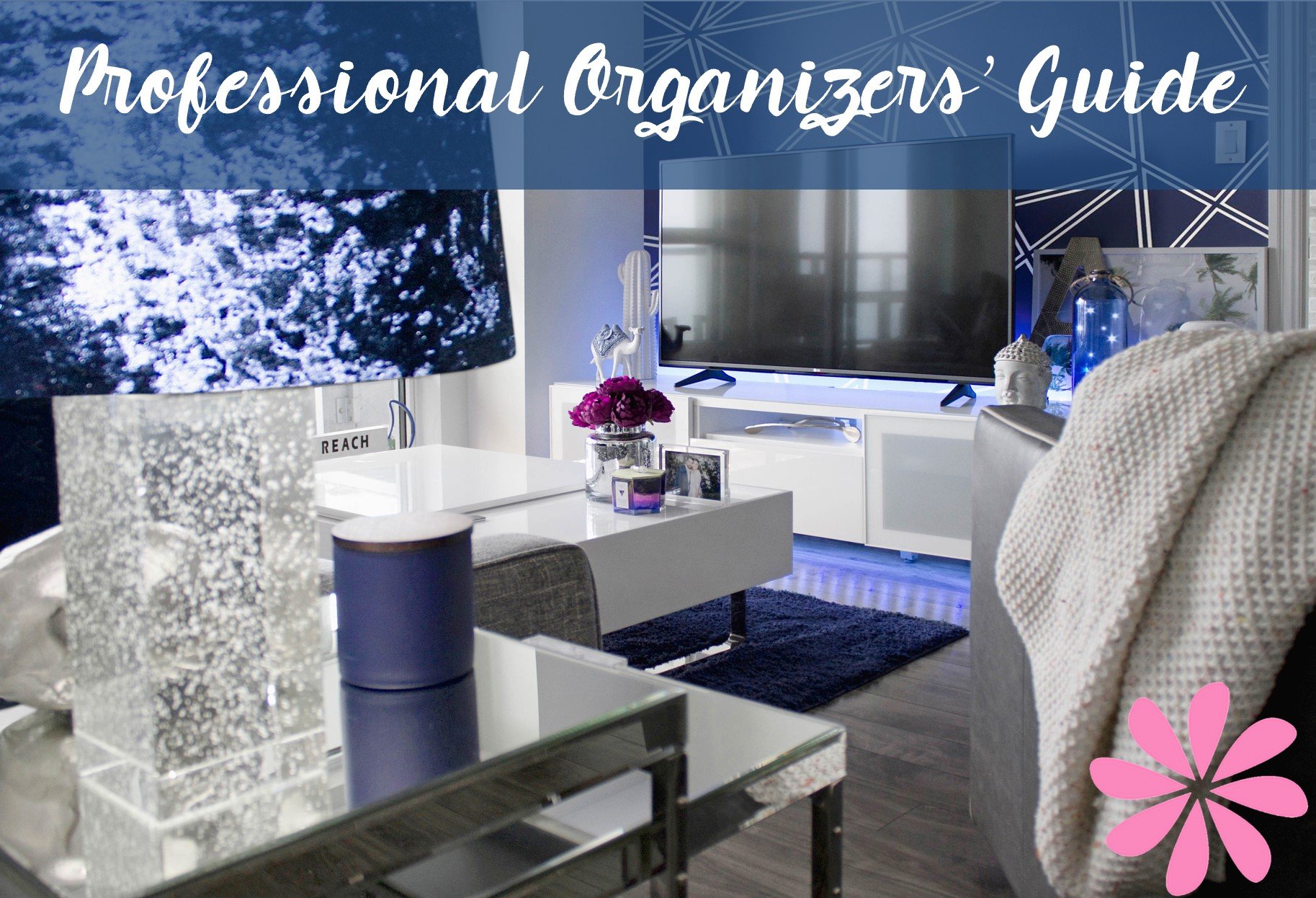The inevitable paper piles - even as a Professional Organizer I am not immune to them! How much real estate do papers take up in your home? The reality is a lot of paper comes into our space and every time something comes in, we have to make a decision and do something with it or, (you guessed it) clutter takes over!
Consider the below as your inspirational and dedicated go-to guide to finally take action and conquer your papers! With tax season underway, we couldn’t think of a more optimal time!
1. Be realistic. Papers are one of the most time-consuming categories to declutter and in my opinion, are usually pretty boring for most people. They aren’t going to disappear overnight, just like they didn’t appear that fast. I often ask my clients to envision how they want their space to feel when they are done with the process – use that as your driving force to push you towards the finish line.
2. Start the decluttering process and know what to keep. The majority of the papers we have are destined for the trash or recycle bin. In my experience, at least 75% of your papers can go. Here is the secret sauce to generally declutter them:
- Pick up one piece of paper at a time
- Make a decision. Is it:
- an archive paper to be filed away (like your tax return)
- an action or “to do” paper to stay visible (like paying a bill)
- recycling
- shredding (when in doubt we always suggest this)
- Work in small increments of time or carve out a larger session – whatever is most pragmatic for you
Here is a suggested list of what to keep and purge. Please refer all legal, tax, accounting and financially related inquiries to appropriately qualified professionals.
- Forever: Tax returns, birth and death certificates, social security card, adoption papers, marriage and divorce certificate, citizenship papers, copyrights/patents, military service records, major medical records, mortgage/loan payoff statements, wills, living revocable trust, financial power of attorney, durable power of attorney for healthcare (update as needed), etc.)
- For as long as you own the item: Receipts for big-ticket purchases (for warranty & insurance claims), vehicle records (title, registration, insurance, etc.), insurance policies
- For 7 years (6 years prior plus the current year): Tax backup (receipts, W-2s, medical payments (if itemizing), property taxes, tax forms from banks, brokerages, unemployment, etc.),
- 7 years after sale: Receipts for home improvements, year-end investment statements
- Recycle/Shred: Junk mail, most manuals, pay stubs (once you receive your W2 for the year), almost anything you can easily find online, most receipts (once reconciled with credit card statement unless needed for tax purposes or a warranty), expired contracts
Note: outside of the forever documents, most items can be scanned and kept digitally.
3. Create New Habits.
- Set a paper boundary. Boundaries help us make faster decisions and reduce decision fatigue. For example, designate only one or two places to keep papers. You will still need to create a system that enables you to easily access what you are looking for (more on that below) – but by making this simple adjustment, you will know exactly where to look for what you need. In my household, we have a spot for incoming (and outgoing) mail as well as a “paper command center” for our action and archive papers.
- Get in the habit of doing something if it is going to take you less than 4 minutes! Did your child come home with artwork? Great, go put it where it belongs. Only 3 pieces of mail today? Go ahead and open them and properly dispose of or keep what you need. These little, seemingly insignificant tasks take up physical and mental space, constantly cluttering your mind and space. If you can quickly and effortlessly do something, give it a try and see what comes of it.
4. Find a system that works for you. Not all solutions are created equal. Think about how you function with paper and ask yourself these questions to get started:
- Do you like stuff on your designated workspace or do you prefer clear surfaces?
- Do you need to see something to remember to do it? (I do!)
- What are your general categories? For example, I have a personal and business wall file.
- What do you want to scan? How much space do you actually need to store your papers?
Here are some of my favorite ways you can beautifully and functionally manage your paper piles!
- Bigso Hanging Wall File: Designate one file for each of your general categories. I love these because you will easily be able to see and access all of your files. You can also mount them to the wall which frees up precious desktop real estate, maximizing your space!
- Small Filing Cabinet: Great for optimizing the unused storage space under your desk and storing archival papers that you do not need to access frequently.
- Desktop File Box: We love this solution for clients who have papers to file but don't need an entire filing cabinet. You can keep it on your desk for easy access or tuck it away on a shelf or in your closet for easy accessibility.
- Bigso Stockholm Office Storage Boxes: These boxes help keep things practical and pretty when creating organizing systems. Use one to contain all your “to-do” items or store stationery or collateral that has been categorized for a specific project in these. Bonus: these are great boxes for storing sentimental papers such as cards.
- I’m currently also obsessed with this splurge to contain Mail. It’s big enough to hold a few days’ worth but not too large to let it pile up!
5. Be consistent. Carve out time for maintenance. Figure out your needed frequency and stick to it. Do you like to open mail every day or do you prefer to time block and do it once per week? Is once per month enough for you to pay your bills or submit your out of network medical claims or does it need to be more frequent? If you are going to keep your beautiful new paper management system intact you are going to need to dedicate time to maintain it or outsource it to Let Laura!
You’ve. Got. This. At the end of the day it’s action that is going to relieve your stress and anxiety. And progress is better than perfection, so get in the habit of doing! Do what you have been putting off and we promise once you have a paper management system in place marrying form and function, you will feel empowered and so much more relaxed!

Related articles:
 |  |  |
Macaroni Kid Lower Manhattan is the family fun go-to source for the latest and most comprehensive information in our area. Subscribe for FREE today.



